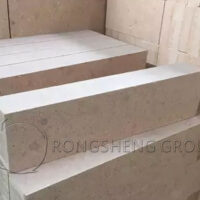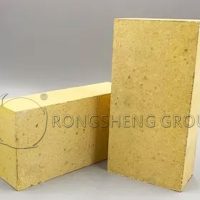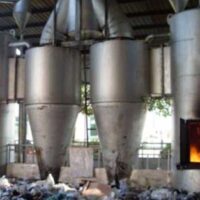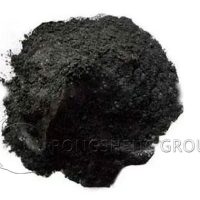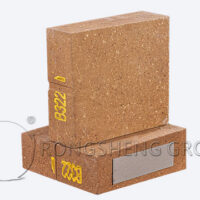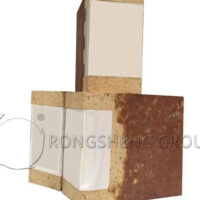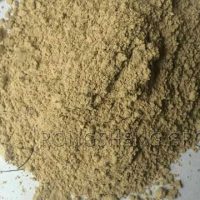Dolomite brick is a kind of alkaline refractory material made of natural dolomite (CaMg (CO3) 2) as the main raw material and calcined at high temperature. Its main chemical components are magnesium oxide (35%-45%), calcium oxide (50%-60%) and a small amount of silicon dioxide, iron oxide, aluminum oxide and other impurities. Its magnesium oxide content is crucial to its refractory performance.
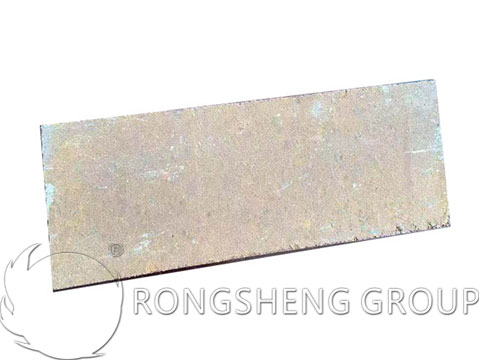
Dolomite Bricks for Cement Kilns
Dolomite bricks are mainly used in the firing zone and anti-corrosion area of cement kilns. Compared with traditional refractory bricks, dolomite bricks can reduce the melting point of slag, improve desulfurization efficiency, and adapt to the high temperature environment of cement kilns. Its advantages are as follows.
(1) Excellent kiln skin performance
Because dolomite bricks are in a high temperature state, the liquid cement clinker will cause the surface of the brick to be corroded. When the temperature rises to 1450℃, the f-CaO in the brick will react with the dicalcium sulfate in the cement clinker, thereby forming a protective layer on the surface of the brick. Because the melting points of C2S and C3S are relatively large, the film is not easy to disappear, so the kiln skin protective layer formed on the surface of the brick is relatively stable.
(2) Excellent corrosion resistance
Because the brick contains f-CaO, a relatively strong protective film kiln skin can be formed on the surface of the brick. The newly formed kiln lining can effectively prevent the liquid phase in the cement clinker from diffusing into the brick body of the dolomite brick, thereby reducing the corrosion and spalling of the refractory brick. Moreover, because the newly formed kiln lining is thick, the temperature of the refractory brick is reduced, thereby reducing the chemical corrosion and heat load of the refractory brick. This increases the application time of the dolomite brick.
(3) The heat loss of the cement kiln body is reduced
Because a thick protective film is formed on the surface of the brick, its temperature is reduced, and less heat is dissipated through the inner wall of the rotary kiln. This can improve economic benefits and reduce energy consumption.
Weak hydration resistance is the most serious weakness of dolomite bricks. During the preparation and output processes, they will come into contact with air, thereby reacting with water vapor, causing them to be severely hydrated. In addition, the poor thermal shock stability causes large-scale cracks to appear in the cement rotary kiln when it is used intermittently, thus damaging the rotary kiln. Its thermal shock stability can be improved by improving the firing system, selecting appropriate particle grading, and adding appropriate additives.
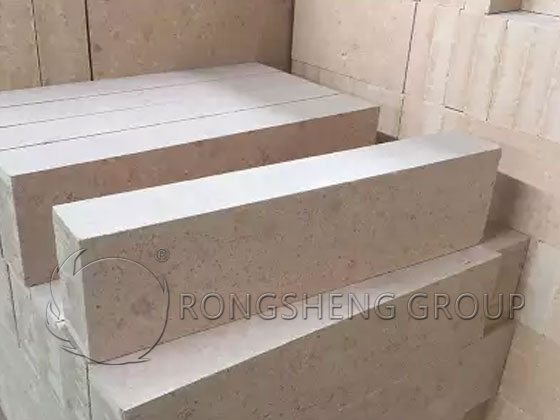
Production Process of Dolomite Refractory Raw Materials
Dolomite is a refractory raw material, and the production cost of dolomite refractory materials is lower than that of other refractory products. In recent years, due to the demand for clean steel, the production volume of dolomite refractory materials has gradually increased. The requirements for purifying molten steel and purifying the environment have also further promoted the development of dolomite bricks and dolomite castables.
The production process of magnesium-calcium refractory materials is as follows: select dolomite and magnesite with low impurity content and high purity; then lightly burn them and crush them; then mix them according to a certain mass ratio; then press them into balls or use a brick press to press them into rough blanks; finally, calcine magnesium-calcium sand in a vertical kiln, tunnel kiln, or rotary kiln. At present, there are 5 processes for producing magnesium-calcium sand, as follows:
1 Coke shaft kiln calcination process
After the light-burned dolomite powder is digested, it is mixed with the light-burned magnesia powder according to the mass ratio. The co-ground powder is put into a mixer and stirred with water. After stirring evenly, it is pressed into balls. After natural drying, it is put into the coke shaft kiln for calcination.
2 Heavy oil shaft kiln calcination process
The digested dolomite powder is ground with the light-burned magnesia powder, and then dry-pressed into balls. After drying, it is put into the kiln for calcination.
3 Tunnel kiln calcination process
The dolomite and magnesite are lightly burned and mixed, digested with water, crushed with a water mill, and then wet-milled in a ball mill. The slurry is pressed into cakes by a filter press, dried, and then pressed into rough pieces, which are sent to the kiln for calcination.
4 Electric melting process
Natural dolomite and magnesite are mixed evenly and melted at a high temperature above 2750℃.
5 Rotary kiln calcination process
Crush the dolomite into 2-8 mm particle size and calcine it into 1-7 mm particles in one step in a fuel-fired rotary kiln.

